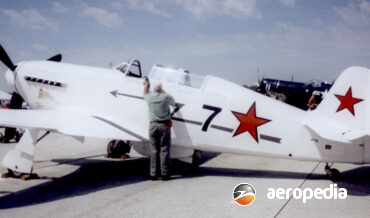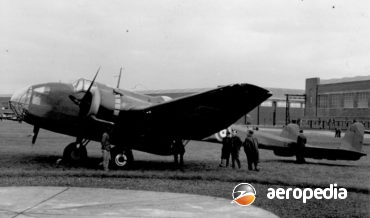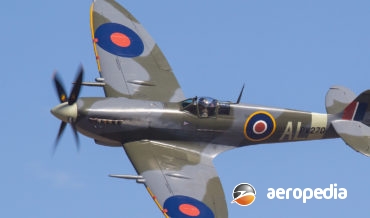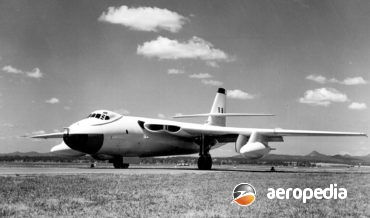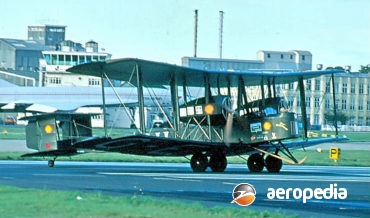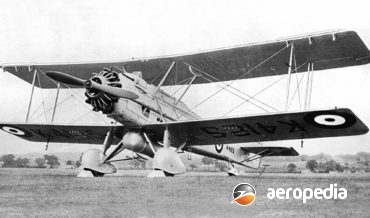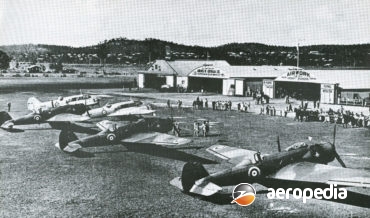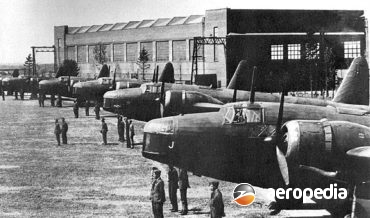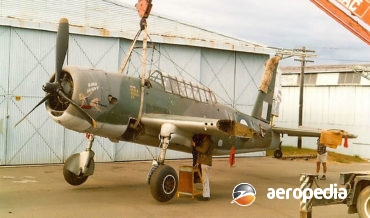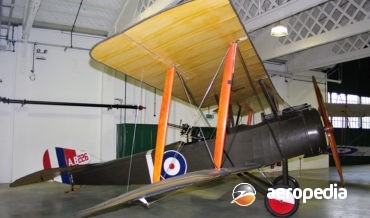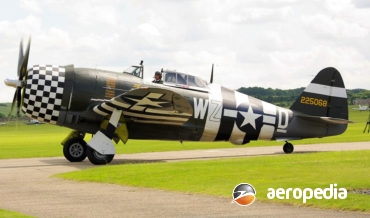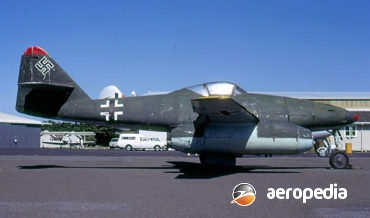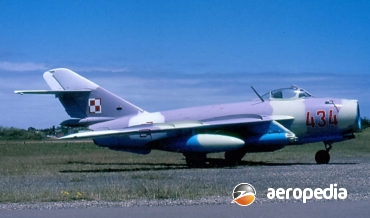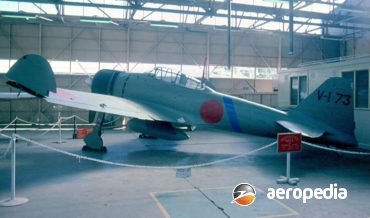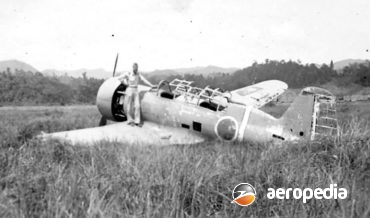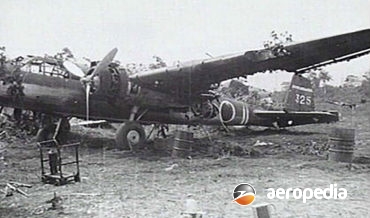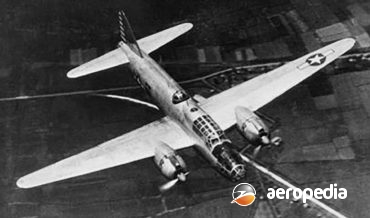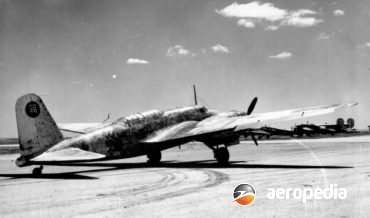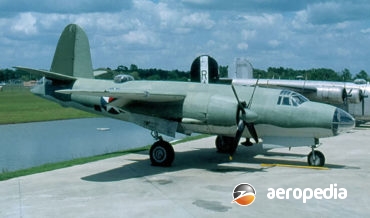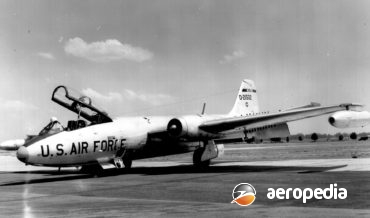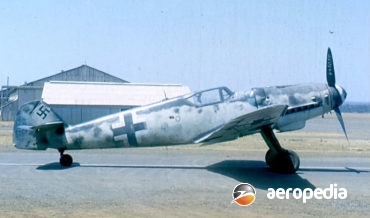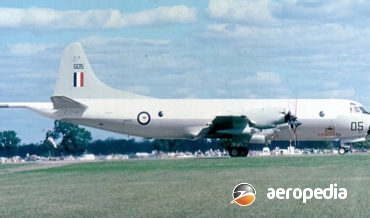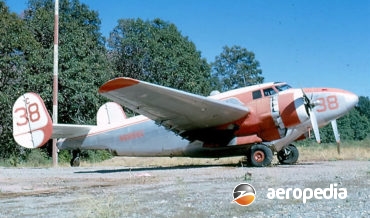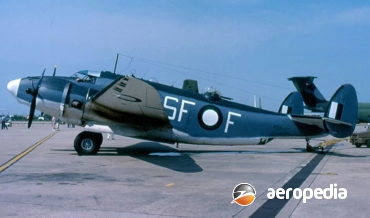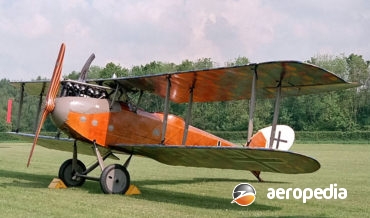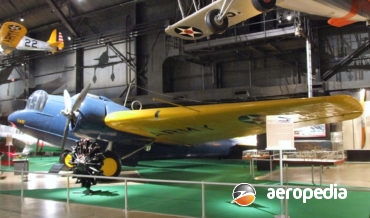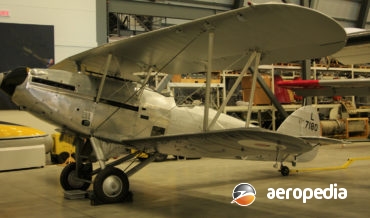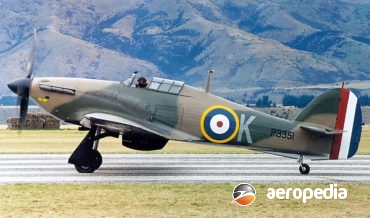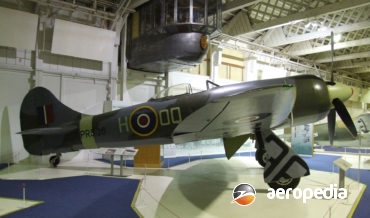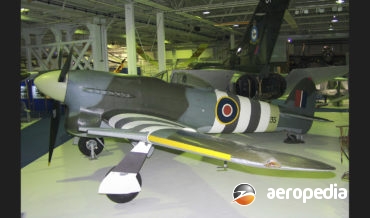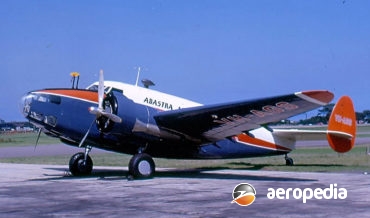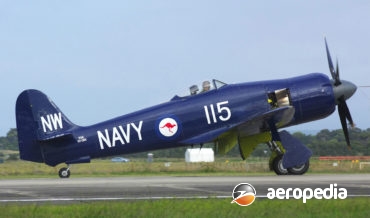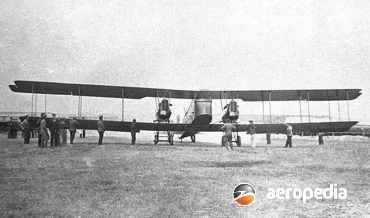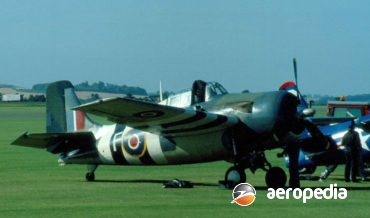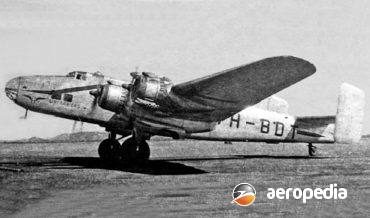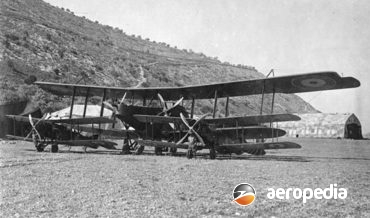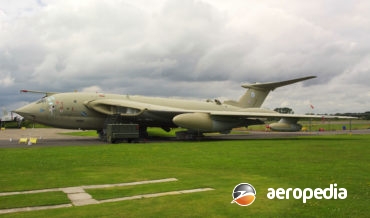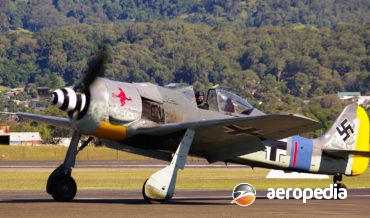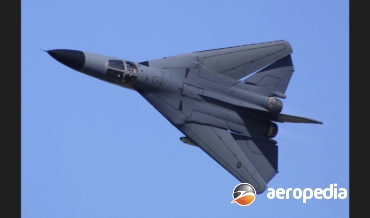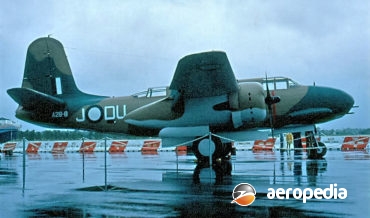All Contents
Contents
The Yak-7 was designed by Alexander S Yakovlev and was a development of the Yak-1, initially known as the I-26, which was first flown in 1940.
David C. Eyre
- March 23, 2020
Known affectionately as Flying Tadpole, and the flying suitcase, the Hampden was one of the mainstays of RAF Bomber Command in the early years of World War II.
David C. Eyre
- August 24, 2019
Probably the most famous fighter aircraft, the Spitfire was conceived as the Supermarine Type 300 single-seat fighter and was designed by a team lead by Reginald J Mitchell.
David C. Eyre
- May 19, 2019
Following the end of World War II, and the commencement of the Cold War, Britain looked to re-equip its bomber squadrons with what became known as the V-bombers, long-range jet-powered aircraft.
David C. Eyre
- May 19, 2019
The Vimy was one of a series of heavy bombers, like the DH-10 Amiens and the Handley Page V/1500, which were designed to bomb Germany during World War I if that conflict had continued.
David C. Eyre
- May 19, 2019
The Vincent was designed in 1934 by Vickers (Aviation) Ltd of Weybridge in Surrey as a modified variant of the Vildebeest to replace the Westland Wapiti and Fairey IIIF in RAF service.
David C. Eyre
- May 19, 2019
The Vickers Type 287 Wellesley long-range bomber was built by Vickers at Weybridge from January 1937, having been designed by the company’s Chief Structural Designer, Barnes Wallis, who later designed the Wellington bomber using a similar revolutionary light-weight geodetic framework. The first production Wellesley flew on 30 January 1937 and
David C. Eyre
- May 19, 2019
The Wellington was one of the most important bombers of World War II, to such an extent that more than twice the number of Wellingtons were built as the Avro Lancaster.
David C. Eyre
- May 19, 2019
The Vultee V-72 Vengeance was designed specifically for use as a dive-bomber in close support of army operations, and was purchased in large numbers for the RAF.
David C. Eyre
- May 19, 2019
The Sopwith 1½ strutter was the first Sopwith aircraft to achieve widespread use as a fighting aeroplane.
David C. Eyre
- May 19, 2019
Designed by Alexander Kartveli, Republic Aviation’s chief engineer, the P-47 was one of the outstanding designs of World War II, being the mount of some of Americas top scoring aces, undertaking some 546,000 combat sorties between March 1943 and August 1945, during which 1,934,000 operational hours were accumulated.
David C. Eyre
- May 19, 2019
Known as the Schwalbe (Swallow), or Sturmvogel (storm petrel) the Me 262 was unquestionably the foremost fighter of its day, with a heavy armament, and a performance far superior to any aircraft available to the Allies during the latter stages of World War II.
David C. Eyre
- May 19, 2019
The MiG 17 was a total redesign of the MiG 15, some 6,000 being built in the Soviet Union, and large numbers were built under licence in Poland (as the Lim 5), China (as the J-5, J-5A and JJ-5), and Czechoslovakia.
David C. Eyre
- May 19, 2019
In its day the Zero was the foremost carrier-based fighter aircraft, and early in World War II was the subject off a myth of invincibility in the air.
David C. Eyre
- May 19, 2019
The Ki-15 /C5M series of light attack bombers stemmed from a private venture of the Mitsubishi Jukogyo concern in the 1930s to produce a modern stressed-skin construction long-range monoplane.
David C. Eyre
- May 19, 2019
Designed by Sueo Honjo, and produced by Mitsubishi Jukogyo K K, the prototype G3M “Nell” powered by two 448 kw (600-hp) Hiro Type 91 liquid-cooled engines was flown in April 1935 and attained a maximum speed of 314 km/h (195 mph).
David C. Eyre
- May 19, 2019
The G4M1 type 1 Land Attack Aircraft Model 11 was encountered in the Pacific campaign by the allies in some numbers and is the most well known Japanese bomber.
David C. Eyre
- May 19, 2019
In 1936 the Japanese Air Headquarters issued a specification for a twin-engined monoplane heavy bomber and, to meet this requirement, a number of aircraft designs were proposed by Japanese manufacturers.
David C. Eyre
- May 19, 2019
In July 1939 Glenn L Martin Co submitted its Martin 179 design to the US Army Board and received a contract for 201 examples of a radical new bomber designed by Peyton M Magruder.
David C. Eyre
- May 19, 2019
Following the outbreak of the Korean War in 1950, the USAF found it was in need of a medium bomber and, as designs of bombers by Martin and North American were a long way from introduction to service, the decision was made to build the English Electric Canberra under licence,
David C. Eyre
- May 19, 2019
The Messerschmitt Bf 109, the most important Luftwaffe fighter of World War II, was produced in larger numbers than any other fighter aircraft ever built, some 33,000 odd being completed.
David C. Eyre
- May 19, 2019
In 1970 the Model P-3C appeared with new technology weapon systems, and a digital computer to ease the workload for the ten man crew, five of whom were housed in the tactical compartment.
David C. Eyre
- May 19, 2019
Following the success of the PV-1 Ventura, the chief engineer of Lockheed Vega commenced work on development of a new variant to meet USN requirements, this model, the PV-2 Harpoon, having an increased wingspan, a re-designed tail, an increase in fuel capacity and an increase in all up weight.
David C. Eyre
- May 19, 2019
In June 1940 The Vega Aircraft Division of the Lockheed Aircraft Corp at Burbank, California, was awarded a contract by the British Purchasing Commission to supply 875 examples of a new bomber derived from the Lockheed 18 airliner.
David C. Eyre
- May 19, 2019
The LVG series of aircraft was designed by Franz Schneider, and developed by Luft-Verkehrs Gesellschaft Johannistal (LVG), this company producing a series of unarmed reconnaissance and bomber aircraft during World War I, aircraft in this series forming part of the equipment of the German air force units at the outbreak
David C. Eyre
- May 19, 2019
The Martin Model 123 was designed and built as a private venture, this being an attempt by Glenn L Martin Co to obtain contracts from the US Army for an aircraft to be involved in early bomb-dropping experiments.
David C. Eyre
- May 19, 2019
In 1934 the British Air Ministry foresaw the problems that may later occur in Europe and decided upon a major expansion programme for its military services, one of the fruits of this plan being the Hawker Hind light bomber, designed as an interim replacement for the Hawker Hart, which had
David C. Eyre
- May 19, 2019
The Hurricane was designed by Sydney Camm to Air Ministry specification F36/34, the prototype (K5083) built at Kingston making its first flight on 6 November 1935, the first production aircraft flying on 12 October 1937, and the first unit to receive the aircraft being No 111 squadron at Northolt.
David C. Eyre
- May 19, 2019
The Tempest was a development of the Typhoon designed by a team lead by Sydney Camm, being a logical development of the earlier aircraft with the Napier Sabre IV engine
David C. Eyre
- May 19, 2019
The Hawker Typhoon was designed by Sydney Camm as an interceptor fighter to replace the Hurricane.
David C. Eyre
- May 19, 2019
Originally required as a navigation trainer for the RAF, the military conversion of the eleven-passenger Lockheed Model 14 Super Electra promised so much in performance that the decision was made in 1938 to order the type for the RAF off the drawing board as the Model 214 Hudson.
David C. Eyre
- May 19, 2019
The Hawker Sea Fury was the last piston-engine fighter-bomber to be manufactured in quantity in the United Kingdom.
David C. Eyre
- May 19, 2019
The G.V was one of a series of long-range heavy bombers built by Gothaer Waggonfabrick A G Gotha in Germany which produced the type in some numbers during World War I, the series also being licence built by Luft Verkehrs GmbH (LVG) and Siemens Schuckert Werke GmbH.
David C. Eyre
- May 19, 2019
The definitive prototype of the Wildcat, known by the manufacturer as the G-36, flew for the first time on 2 September 1937 under the designation XF4F-2.
David C. Eyre
- May 19, 2019
One of the most important bombers of World War II, a total of 6,179 Handley Page Halifax’s had been built by time the production ended, having been built by Handley Page (1,592), English Electric (2,145), London Aircraft Production Group – LAPG (710); Rootes Securities (1,071) and Fairey Aviation (662).
David C. Eyre
- May 19, 2019
The O/400 (Handley Page HP.12) was a development of the O/100, which was built to the requirements of the British Admiralty
David C. Eyre
- May 19, 2019
The prototype of the HP.80 Victor (WB771) made its first flight on 24 December 1952 but the programme suffered a setback when, on 14 July 1954, during a low-level run at Cranfield the ‘structural rigidity of the tail was slightly reduced by a minor fatigue failure’ causing the tailplane to
David C. Eyre
- May 19, 2019
The FW 190 was designed by Kurt Tank, technical director of the Focke Wulf Flugzeugbau, and was one of the most successful fighter aircraft of World War II, commencing life powered by a two-row BMW radial engine, final variants being powered by Junkers Jumo in-line engines.
David C. Eyre
- May 19, 2019
On 21 December 1964 the first F-111 flew at Carswell Air Force Base, Texas. It was the product of 25 million man-hours of planning, design, and construction, and 2,100 hours of wind-tunnel testing.
David C. Eyre
- May 19, 2019
In 1936 the El Segundo Division of the Douglas Aircraft Company designed a new attack bomber known as the Model 7A.
David C. Eyre
- May 19, 2019
Recent Comments
Archives
Categories
- No categories
Categories
- No categories
Latest Posts
Newsletter

